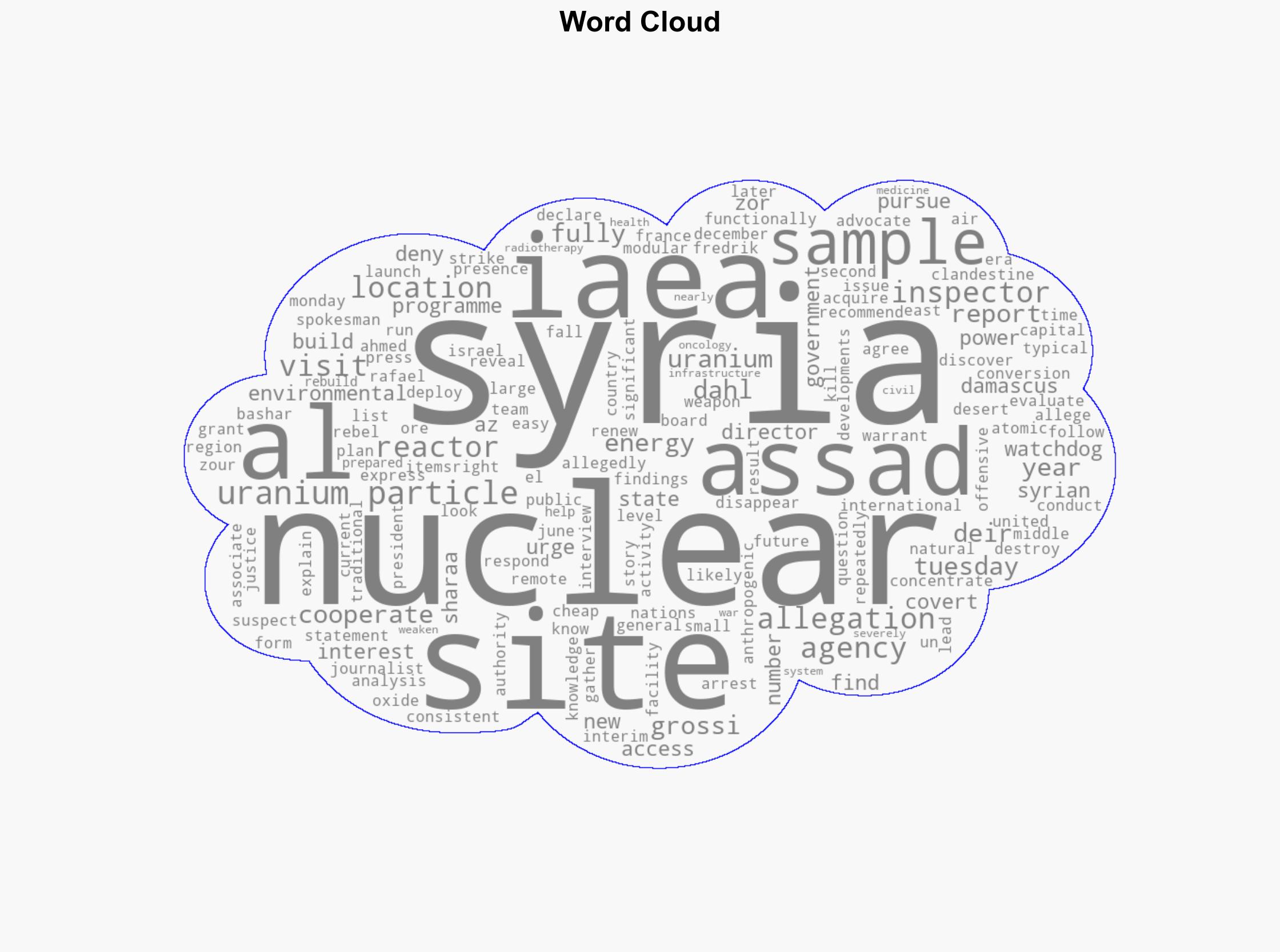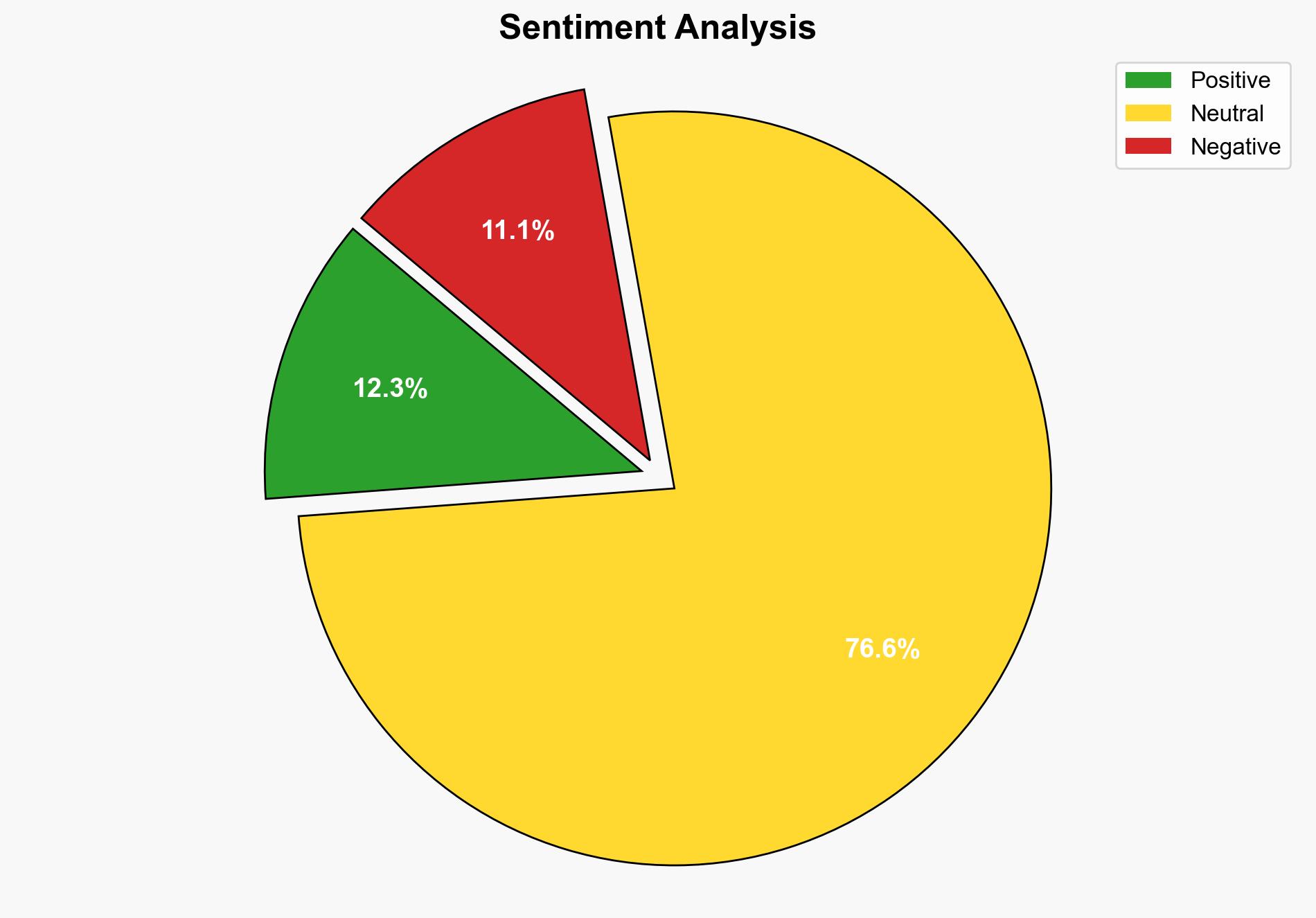UN watchdog finds uranium at alleged Syrian nuclear site from al-Assad era – Al Jazeera English
Published on: 2025-09-03
Intelligence Report: UN watchdog finds uranium at alleged Syrian nuclear site from al-Assad era – Al Jazeera English
1. BLUF (Bottom Line Up Front)
The International Atomic Energy Agency (IAEA) has discovered uranium particles at a site in Syria, allegedly linked to a covert nuclear program during Bashar al-Assad’s tenure. Two main hypotheses emerge: Syria was developing a clandestine nuclear program, or the uranium presence is unrelated to nuclear weapons development. The evidence moderately supports the first hypothesis. Recommended actions include diplomatic engagement with Syria to ensure transparency and prevent regional nuclear proliferation. Confidence Level: Moderate.
2. Competing Hypotheses
Hypothesis 1: Syria was developing a clandestine nuclear program during the al-Assad era, evidenced by the presence of uranium particles consistent with nuclear reactor activities.
Hypothesis 2: The presence of uranium particles is due to non-military activities, such as scientific research or contamination from external sources, and not indicative of a nuclear weapons program.
Using Analysis of Competing Hypotheses (ACH), Hypothesis 1 is better supported due to the consistency of uranium particles with nuclear reactor operations and historical context of regional nuclear ambitions.
3. Key Assumptions and Red Flags
Assumptions:
– Hypothesis 1 assumes intentional development of nuclear capabilities by Syria.
– Hypothesis 2 assumes alternative explanations for uranium presence are plausible.
Red Flags:
– Syria’s denial of allegations and lack of full cooperation with the IAEA.
– Historical precedent of regional nuclear ambitions and clandestine activities.
– Potential bias in interpreting data due to geopolitical tensions.
4. Implications and Strategic Risks
The discovery raises concerns about regional nuclear proliferation and potential escalation of tensions in the Middle East. If Syria is pursuing nuclear capabilities, it could trigger a regional arms race, destabilizing the area further. Economic sanctions or diplomatic isolation could follow, impacting Syria’s already fragile economy. Additionally, cyber threats could emerge as states seek to gather intelligence or disrupt nuclear activities.
5. Recommendations and Outlook
- Engage in diplomatic efforts with Syria to ensure transparency and compliance with international nuclear agreements.
- Enhance regional monitoring and intelligence-sharing to detect and deter nuclear proliferation activities.
- Scenario Projections:
- Best Case: Syria cooperates fully with the IAEA, and no evidence of a weapons program is found, easing regional tensions.
- Worst Case: Confirmation of a Syrian nuclear weapons program leads to military interventions or regional conflict.
- Most Likely: Continued diplomatic pressure results in partial cooperation, with ongoing regional concerns about nuclear proliferation.
6. Key Individuals and Entities
– Bashar al-Assad
– Rafael Grossi (IAEA Director General)
– Fredrik Dahl (IAEA Spokesman)
– Ahmed al-Sharaa (Interim Syrian President)
7. Thematic Tags
national security threats, nuclear proliferation, Middle East stability, international diplomacy





